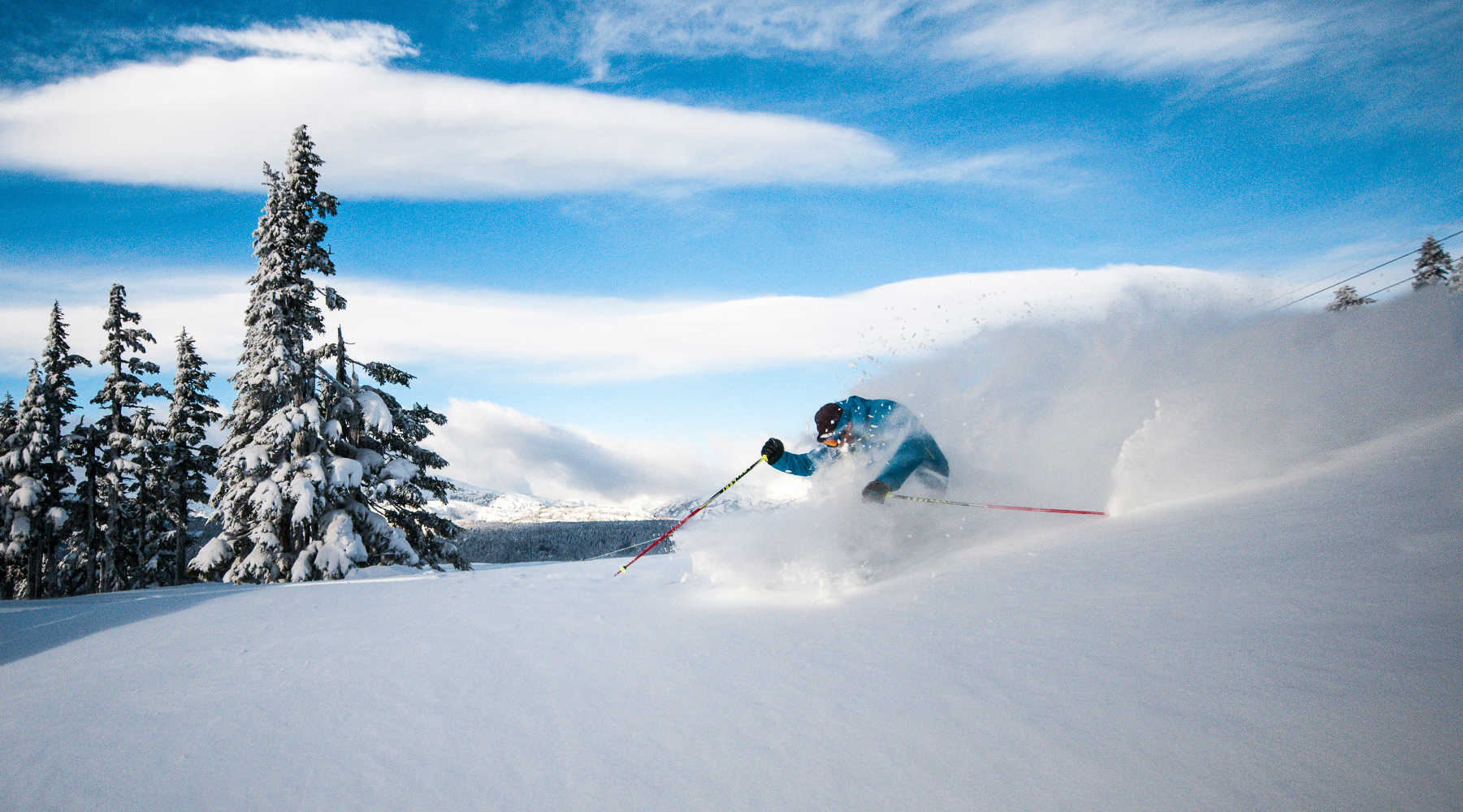With meters of fresh powder falling on the other side of our borders, it’s the right time for a quick theory course to adopt the right reflexes in the powder.
Skiing in 50 cm of powder is an achievable art as long as you don’t start off headfirst. Whatever your level, here are our tips for gorging yourself on this fresh snow while looking for some fluid curves and new sensations… all while controlling your speed and therefore your safety.
Good advice for the less experienced
- Surround yourself with professionals to choose known and secure spots and itineraries.
- Choose open slopes first, not too steep but not too flat either… The lighter the powder, the easier it will be. And conversely, the deeper or heavier the snow, the more you will have to force yourself to get off the ground and handle your skis on the surface.
- Dare to use speed to get your skis off the ground, i.e. emerge on the surface instead of getting stuck under the snow layer. In the beginning, you will have to accept to let your skis go instead of forcing them to turn right away, but you will see that it is much easier in powder because you can break much more easily.
- Position yourself slightly backward to help the tips get out of the snow, then try to come back in line with your skis to let them slide on the surface by pressing slightly on your front tongues.
- Opt for fairly open curve trajectories which are easier to manage at the beginning and above all allow you to keep a minimum of speed to avoid sinking like a stone or simply stopping dead in your tracks.
- Don’t stay static, try to put some movement in your legs, to get up between two curves to lighten your skis and facilitate the turn, to finally come to lean progressively and more and more strongly on your legs as you advance in the curve.
- Focus on your balance: finding the right balance in powder is easier said than done but it is essential…
To avoid:
- Choose a slope that is too steep or too uneven (dotted with rocks, forests, escarpments).
- Follow tracks, as tempting as they are, you don’t know where they will lead you… This is the best way to get lost, to get stuck, and therefore to put yourself in danger.
- Forcing to turn: in the snow, it is either the speed or your ability to lighten your skis (thanks to a vertical play of your legs, i.e. raising your knees) that should allow you to change direction.
- Stay on your heels: at the beginning, it is the natural reflex and it will help you to evolve! But if you do not try to return to balance, you will quickly stagnate…
- To press on one ski! If on the slopes, the support on the outside ski is essential, in powder, you must perfectly distribute your pressure on both skis to move more easily on the surface.
- Stay cool and flexible! The harder you get, the more you force and the less your skis will be able to work.
Good advice for the most experienced skiers
- Ideally, you should work with a professional to choose safe spots and itineraries perfectly adapted to your level. At the very least, you should be well informed beforehand and well equipped.
- Choose a variety of spots: steep, open, technical, wooded, etc. Skiing well means knowing how to read and ride everything. The same goes for the quality of the snow.
- Play with the terrain! Use slopes and counter-slopes, obstacles, nuance the radius, the speed… Vary the pleasures in the end! Learn to close a curve after going straight and full speed in a small corridor, look for powerful and solid supports or go with agility between the trees…
- Ski with your shins on the tongue (unless the snow is too heavy to allow it). Look for balance in the plumb of your skis with piloting that starts with the foot and the boot (and not with the thighs). This is the difference between a skier who uses his feelings and one who rides with force.
- Try to put some movement, to act on your legs and your skis. The idea is not to suffer the speed and terrain by wedging the calf on the back tongue.
To avoid :
- Always choose skis that are too wide… A good exercise is to find balance and movement with narrower skis. This way, you will realize that with 100 mm on the skate, there is plenty of room for fun!
- Shoot straight: it’s good to be scared, or to be clever, but technically… it’s not worth much! Especially if you are sitting on your skis…
- Old-fashioned sculling : technically, it’s interesting to work on the vertical game but it would be a pity with the current equipment which allows you to exploit the ground infinitely…</l

